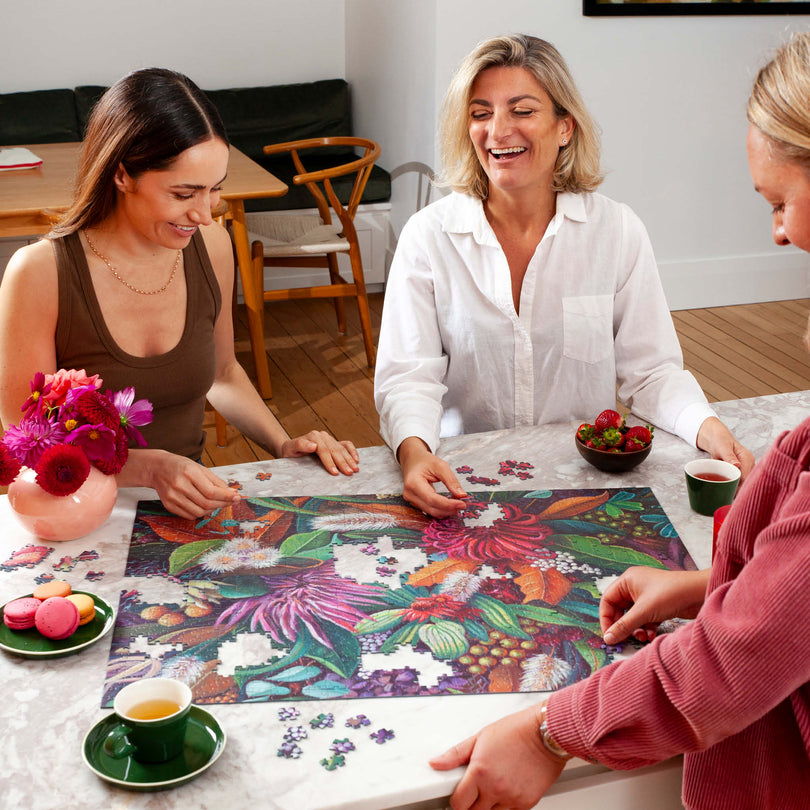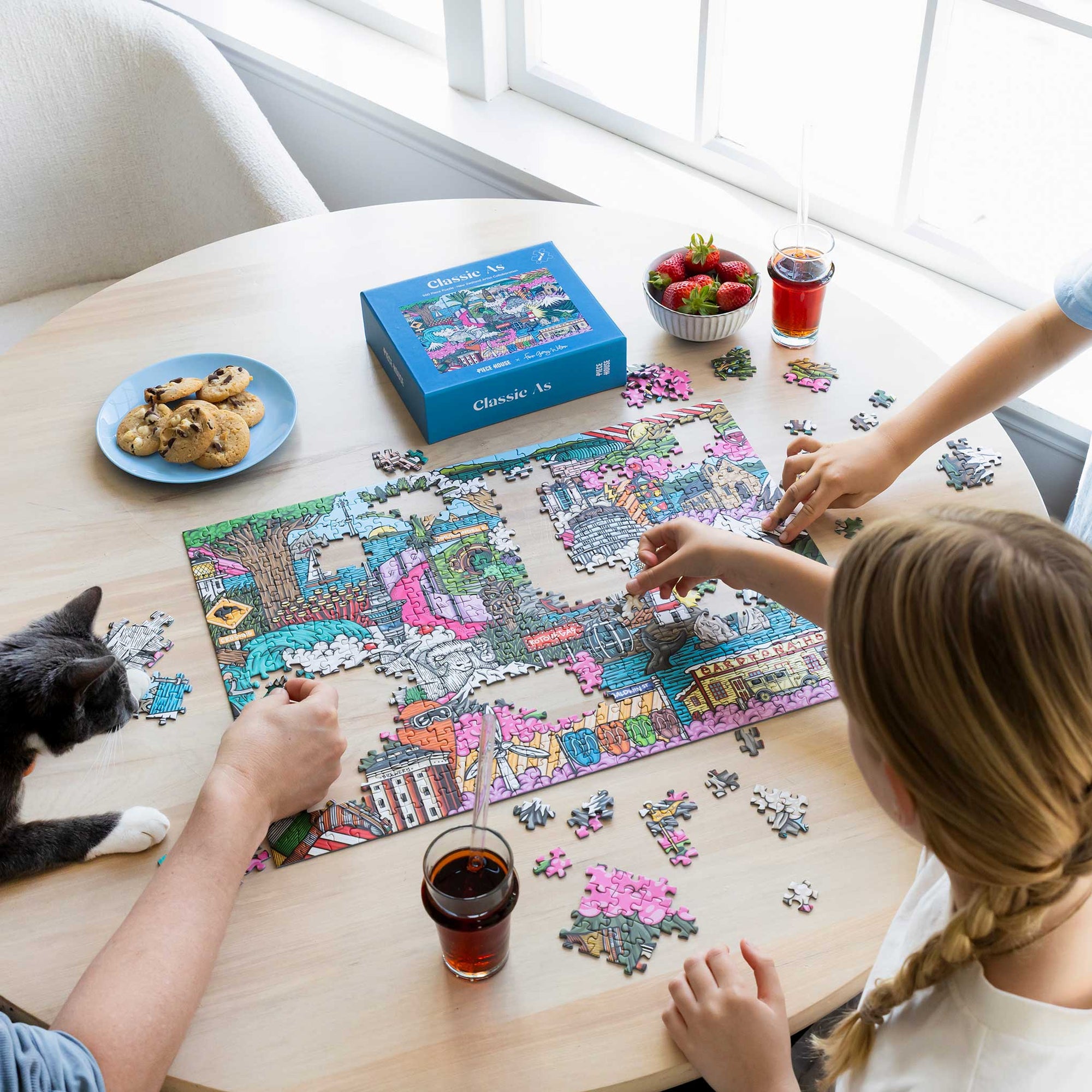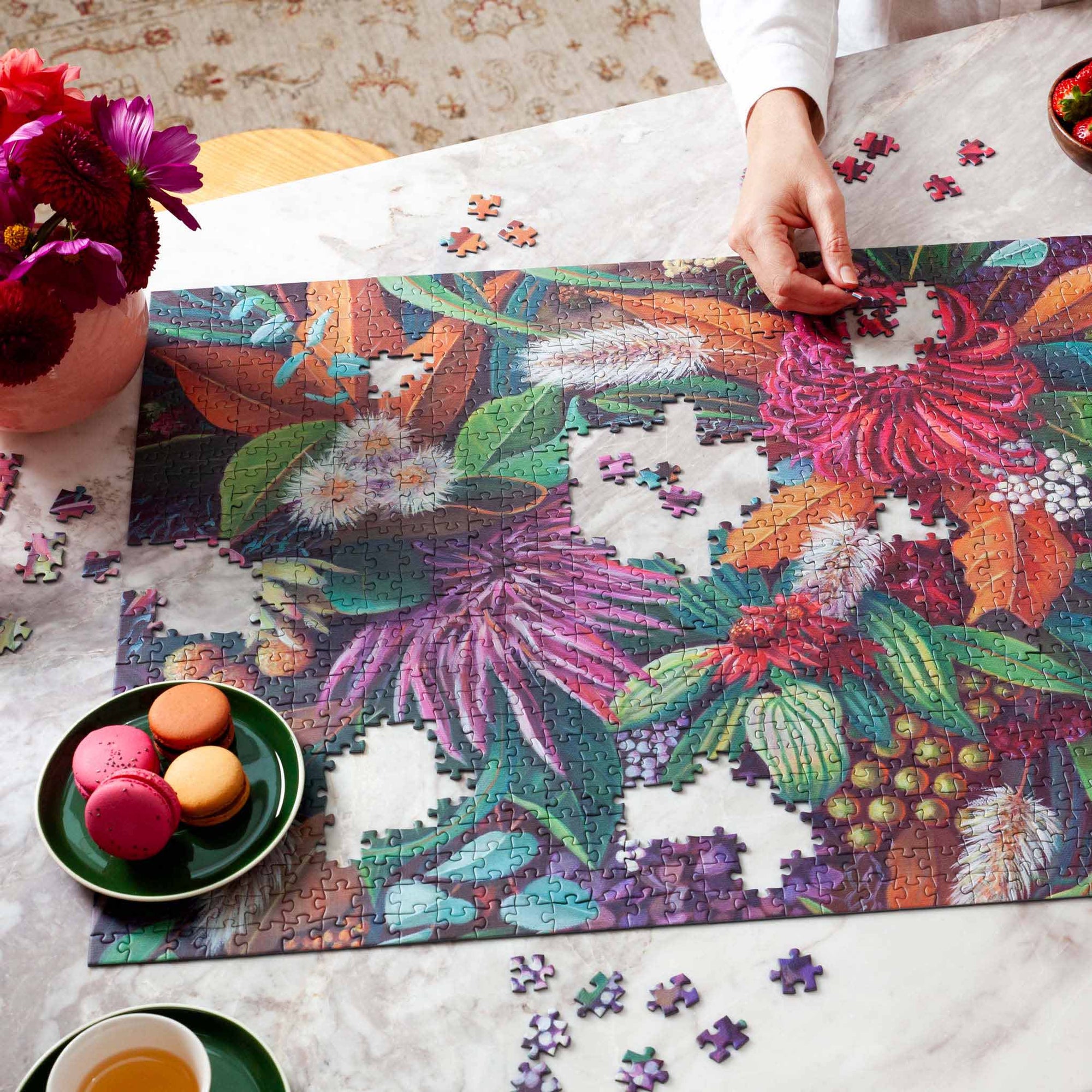Framing a completed jigsaw puzzle can transform your hours of effort into a stunning display piece, allowing you to preserve a cherished memory in a new way. A well-chosen frame not only protects the artwork but also enhances its visual appeal, turning your puzzle into a piece of art you'll be proud to hang on your wall. Whether it's a vibrant landscape or a whimsical illustration, the right frame can elevate your puzzle from tabletop activity to wall-worthy decor.
Choosing the perfect frame requires careful consideration of several factors, including size, material, and protective features. By taking the time to select a frame that complements your puzzle, you ensure that it remains in pristine condition for years to come.
Consider the Size of Your Completed Puzzle
The first step in framing your puzzle is to accurately determine its dimensions. Measuring your puzzle carefully ensures that you select a frame that fits well, without squeezing or leaving too much space around the edges. You can use a ruler or measuring tape to get the length and width of your puzzle.
Different puzzles come in various sizes, commonly ranging from 500-piece puzzles to 1000-piece puzzles. Here are some steps to handle different puzzle sizes:
- Measure the width and length of the puzzle directly along the edges.
- Be aware that some puzzle brands have slight variations in size, even with the same piece count.
- Choose a frame with enough depth to comfortably accommodate the entire thickness of the puzzle once backed and mounted.
Standard frame sizes are available for popular puzzle dimensions, making the selection process more straightforward. For instance, a 500-piece puzzle might fit nicely into a 16x20-inch frame, while a 1000-piece puzzle often requires a 20x27-inch frame. Opting for a standard frame can save you effort and expense.
Choose the Right Frame Material
When it comes to framing, the material you choose plays a big role in both the look and the durability of your display. Different materials offer distinct benefits, so it’s key to select one that aligns with your decor and personal style. Let's take a closer look at the common options: wood, metal, and acrylic.
Wood frames often lend a warm and traditional feel. They're available in various finishes, like oak or mahogany, making them versatile for different interior styles. However, ensure the wood is properly treated to resist warping or damage over time.
Metal frames provide a sleek and modern appearance. They are particularly durable and can be a superb choice for contemporary spaces. With finishes ranging from shiny chrome to matte black, metal frames add a touch of elegance.
Acrylic offers a lightweight alternative that's both stylish and practical. Its transparency gives a floating effect, creating a unique visual experience. Keep in mind that acrylic frames are also less prone to breakage, making them suitable for high-traffic areas.
Protecting Your Puzzle with UV-Resistant Glass
Preserving the vibrant colours of your puzzle is important, especially if it’s displayed in a sunny room. UV-resistant glass is an excellent choice for this purpose, blocking harmful rays that can cause fading. This type of glass not only keeps your artwork safe but also ensures longevity.
Other options include non-glare glass, which reduces reflections and makes viewing your puzzle easier from different angles. Standard glass is the most basic choice and works well if UV exposure isn’t a concern.
To maintain the clarity of the glass, regular cleaning is recommended. Use a soft, lint-free cloth and a gentle glass cleaner to keep it spotless. Avoid abrasive materials that might scratch the surface.
Ensuring a Secure Fit
Once you have your frame, ensuring a snug fit is crucial to keep the puzzle in place. An ill-fitted frame can lead to the puzzle shifting or pieces coming loose.
Here's a quick checklist to follow for securing your puzzle:
- Use sturdy backing material to provide support. Foam board is a great option as it's lightweight yet firm.
- Consider using adhesives designed for puzzles to hold individual pieces together. Make sure they're puzzle-friendly and won't damage the pieces.
- Check the fit periodically, especially in the first few months. This will help you catch any potential issues early on.
Crafting Your Perfect Display
Choosing the right frame for your jigsaw puzzle involves considering size, material, and protective aspects. By taking these into account, you create a display that not only shows off your completed masterpiece but also safeguards its colours and structure. Whether your taste leans towards classic wood frames or the modern touch of acrylic, there’s an option out there to match your space beautifully.
To transform your puzzle masterpiece into a framed gem, consider all the elements discussed, from materials to fitting. If you're ready to find the perfect frame, explore our range of jigsaw puzzle frames available at PieceHouse. Your completed puzzle deserves to shine as a cherished piece of art.





